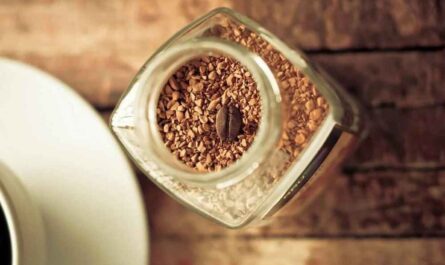Dried Herbs A Flavorful Addition to Your Cooking
Dried plants have been used for centuries to add flavor and nutrients to foods. When herbs are dried, their aromatic oils are often concentrated, which makes them a potent ingredient to spice up meals. Let’s take a look at some of the most commonly used dried plants and their benefits.
Rosemary
Rosemary is native to the Mediterranean and is a popular dried herb used in cuisines around the world. It has woody pine-like flavor and scent. Rosemary contains antioxidants that may help reduce inflammation. It also supports brain health due to rosmarinic acid content. This compound has neuroprotective properties. As a Dried Herbs, rosemary is often used to season meats, chicken, fish and vegetables. It pairs well with roasted potatoes. Only a little is needed as rosemary’s strong flavor stands out.
Oregano
Oregano is closely related to marjoram but has a stronger, more pungent flavor. It’s commonly used in Italian and Mexican cooking. Oregano contains antioxidants, minerals, and essential oils that provide antibacterial effects. It may help control blood sugar levels as well. As a dried herb, oregano is a staple seasoning for pizza, pasta sauces, chili and more. Just one to two teaspoons is sufficient for flavoring a whole pot of sauce or sautéed vegetables.
Thyme
Thyme has an earthy and warm flavor that lends itself well to savory dishes. It contains antioxidants and anti-inflammatory compounds. Thyme may even help fight bacteria and viruses with its antimicrobial properties. As a dried herb, thyme is a popular addition to stuffings, stews, soups and braised meats. Use one to two teaspoons to season six servings. Dried thyme is also commonly brewed into tea for its medicinal benefits.
Basil
Basil brings a sweet, bright flavor to meals and is a star ingredient in pesto sauce. It has anti-inflammatory and antioxidant effects that may prevent cell damage. Basil essential oils also demonstrate antimicrobial activities. As a dried herb, basil remains a key seasoning for tomato sauces, pizza, pasta dishes, salads and more. Use one tablespoon of crushed dried basil leaves to substitute for one cup of fresh chopped basil.
Parsley
Parsley shouldn’t be overlooked, as it offers a variety of health benefits beyond just flavor. It contains vitamins K, C and A as well as antioxidants. Parsley may help reduce inflammation and supports bone health. As a dried herb, parsley adds brightness to soups, stews and rice dishes. Crumble or sprinkle dried parsley over meals for color and nutrition. One teaspoon dried equals one tablespoon fresh chopped parsley.
Preserving HerbFlavor and Nutrients When Drying
When drying fresh herbs at home, it’s important to retain their nutrient-rich qualities and flavors:
– Wash and dry fresh herb leaves completely before drying. Moisture will cause mildew.
– Lay out clean leaves in a single layer on a paper towel or kitchen towel. Hang bundles upside down in a dry, dark place with good airflow.
– For an electric dehydrator, dry at around 95°F, flipping herbs occasionally, until brittle but not brown, 2-5 hours.
– In the oven, bake herbs on a low heat such as 170°F for 30-60 minutes or until dried. Stir every 15 minutes.
– Store dried plants in airtight glass jars in a cool, dark cabinet up to 1 year for maximum freshness. Whole dried leaves tend to keep flavor longest.
– For crushed dried plants, process small batches at a time in a spice or coffee grinder. Store in jars promptly.
With proper drying and storage methods, home-grown and homemade dried plants can provide flavor bursts with concentrated nutrition to enjoy all year long.
Storing and Using Dried plants Effectively
Here are some tips for optimizing dried herb usage:
– Date herb jars when opening to know when to replace stale herbs. Use within 6-12 months.
– Crush or rub dried leaves between your fingers before adding them to release more aromatic oils into dishes.
– Add whole or crumbled herbs near the end of cooking time. Their flavors are more delicate when dried.
– Steeping dried plants in hot water makes tasty herbal teas or infused oils with concentrated benefits.
– Fresh herbs generally need only 1/3 the amount of dried in recipes. Adjust to taste when substituting.
– To perk up limp dried plants, put them in a warm oven for 5 minutes before using. The heat revives fragrance.
Proper handling and measuring of dried plants maximizes their shelf life and flavor contributions in the kitchen. With some simple adjustments, home-preserved dried plants rival store-bought varieties.
In dried herbs pack big nutrition into small, potent packages. Their concentrated flavors add depth and signature notes to all types of global cuisines. With correct drying, storage and usage techniques, herbs maintain nutrients and bring lively aromas to meals throughout the year. Their time-tested benefits have kept diverse cultures nourished for generations.
About Author - Ravina Pandya
Ravina Pandya,a content writer, has a strong foothold in the market research industry. She specializes in writing well-researched articles from different industries, including food and beverages, information and technology, healthcare, chemicals and materials, etc. With an MBA in E-commerce, she has expertise in SEO-optimized content that resonates with industry professionals. LinkedIn Profile



